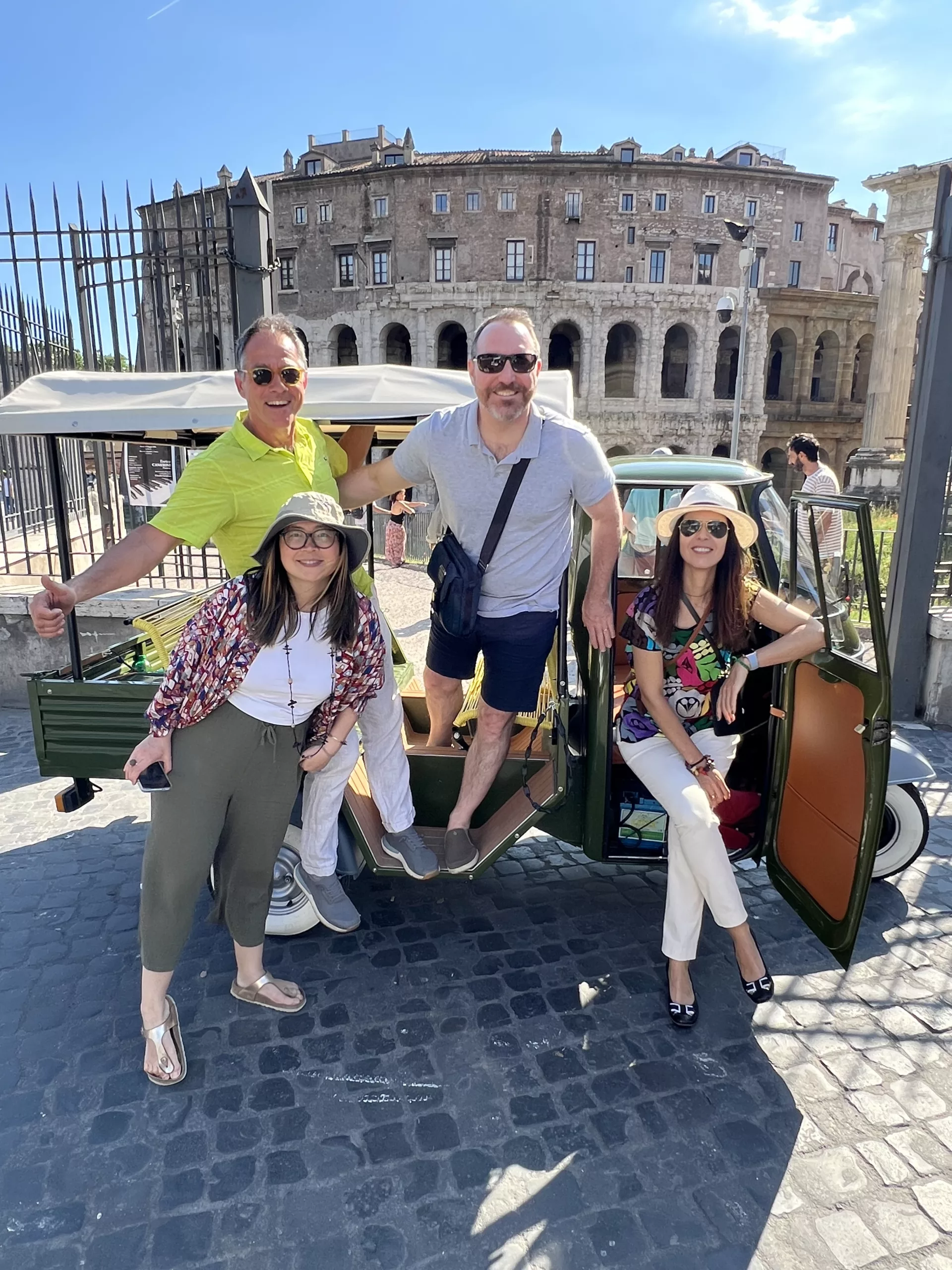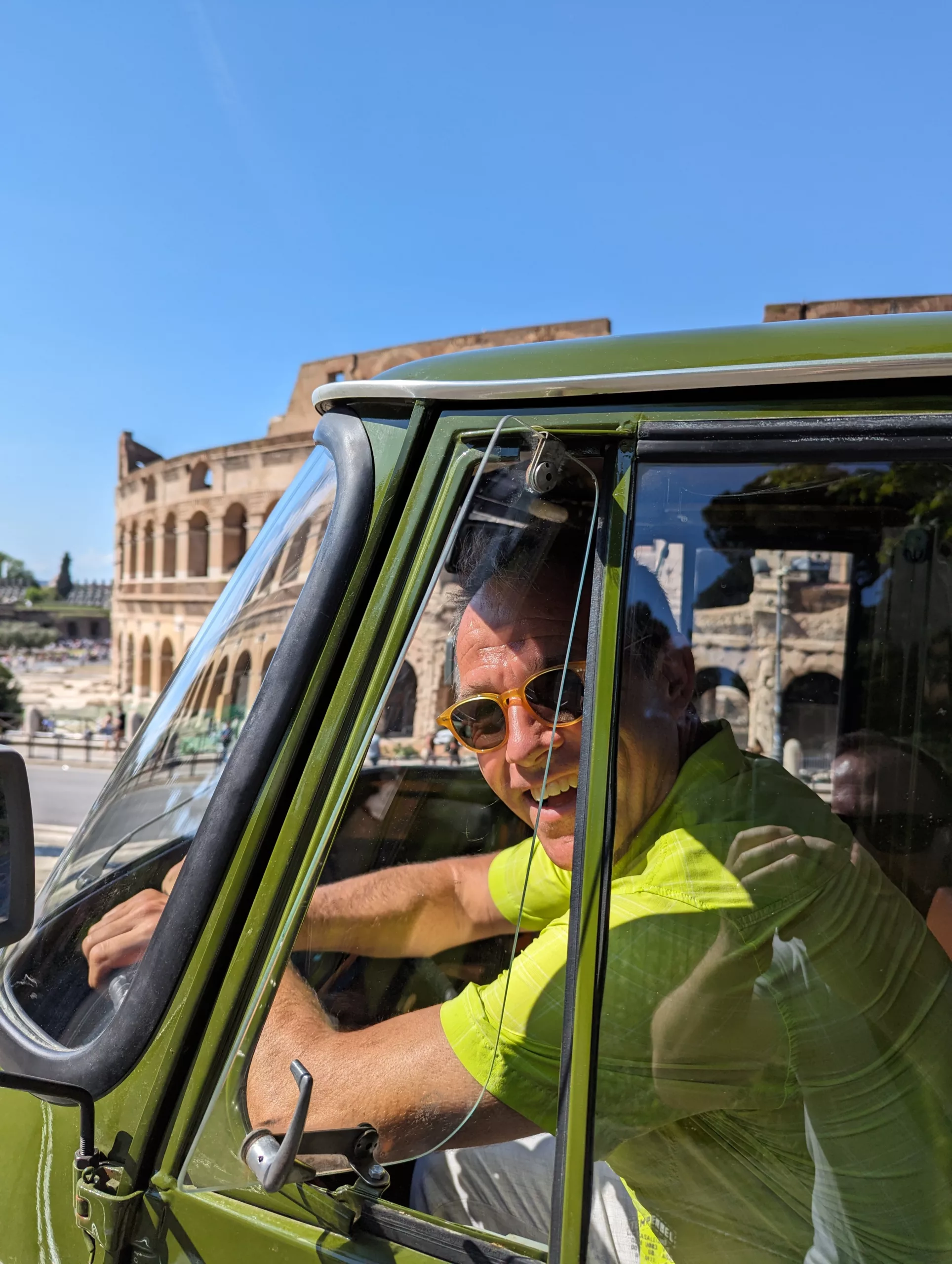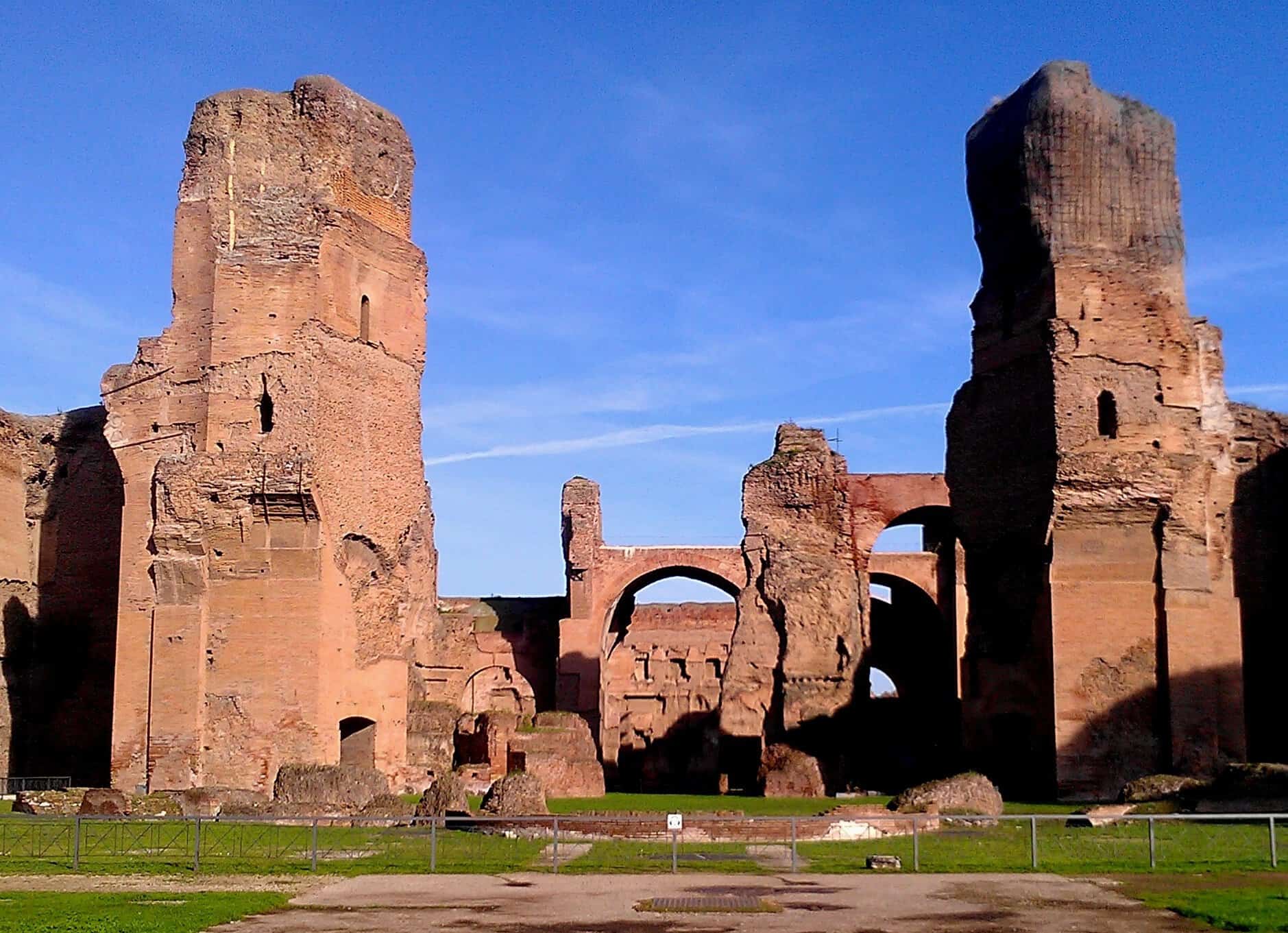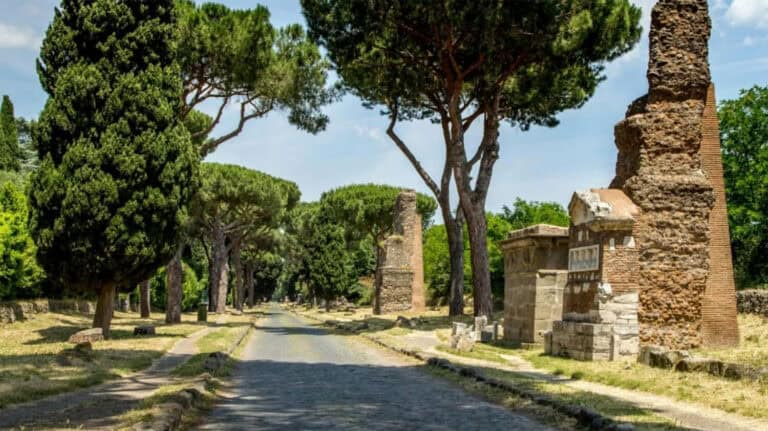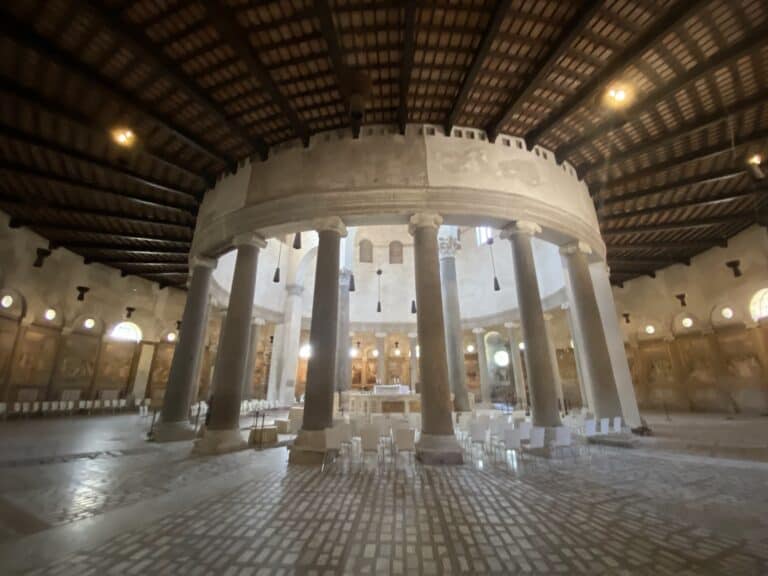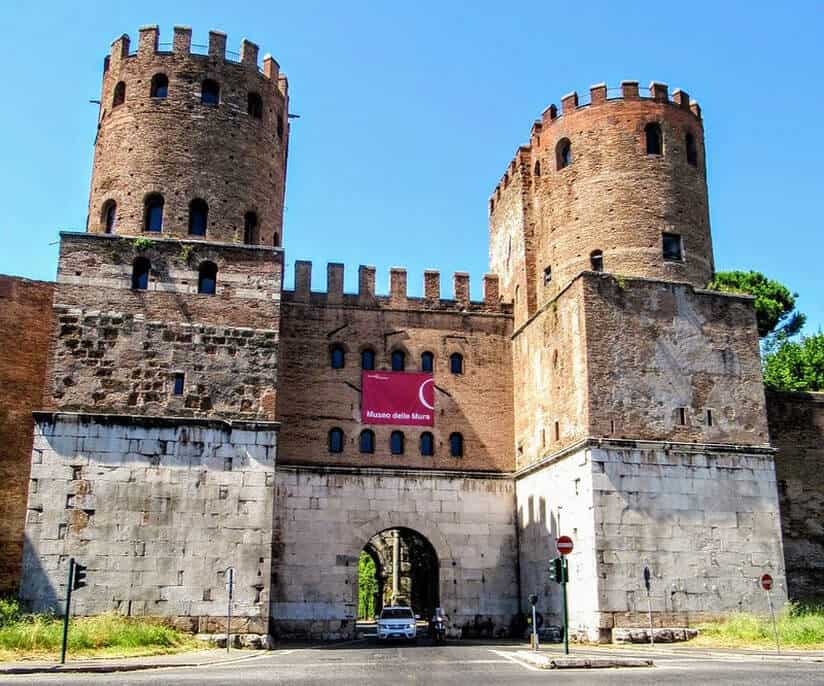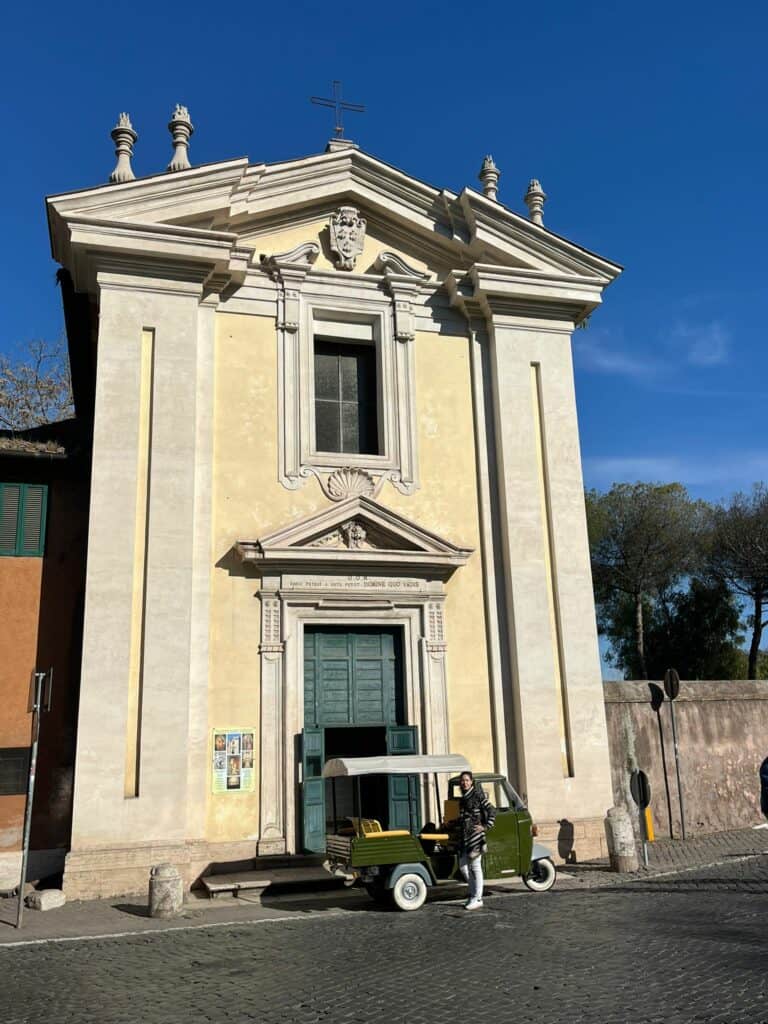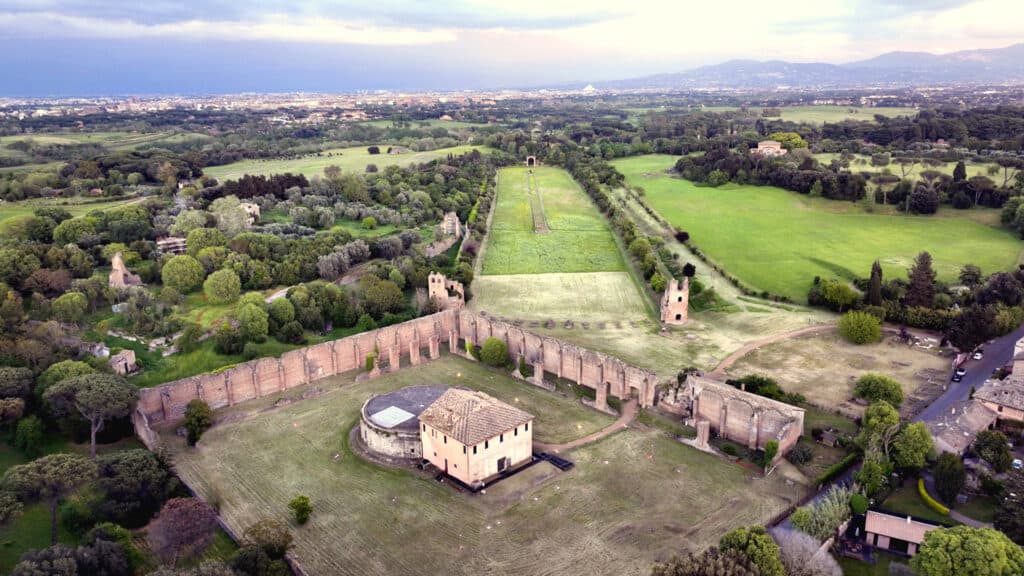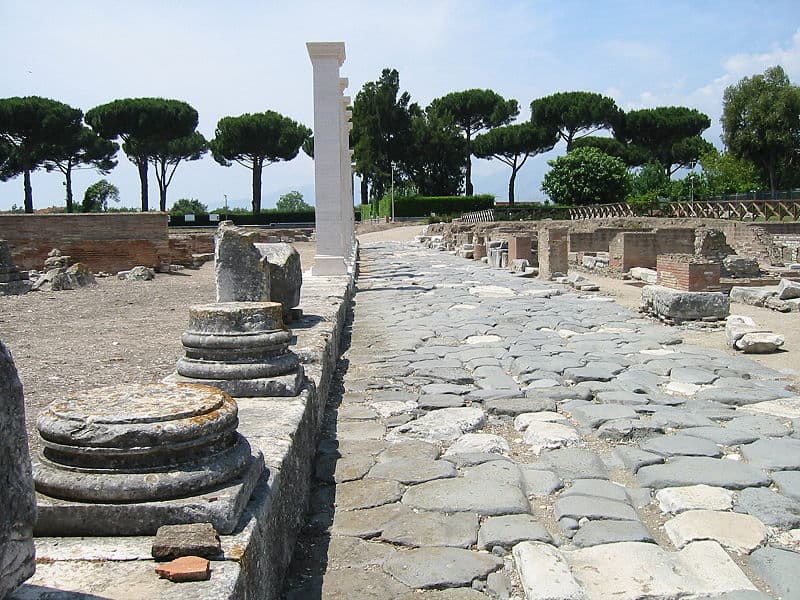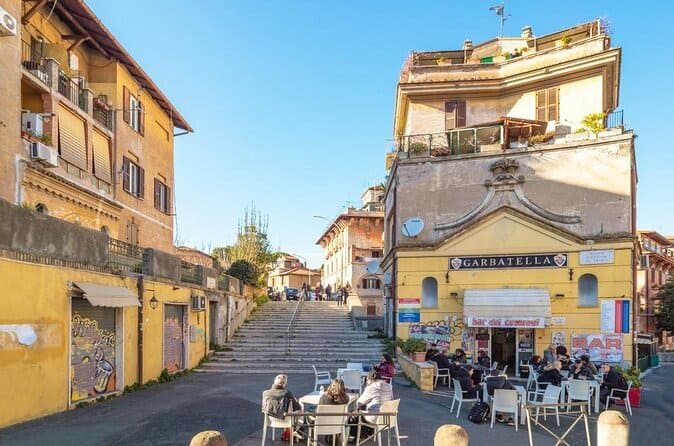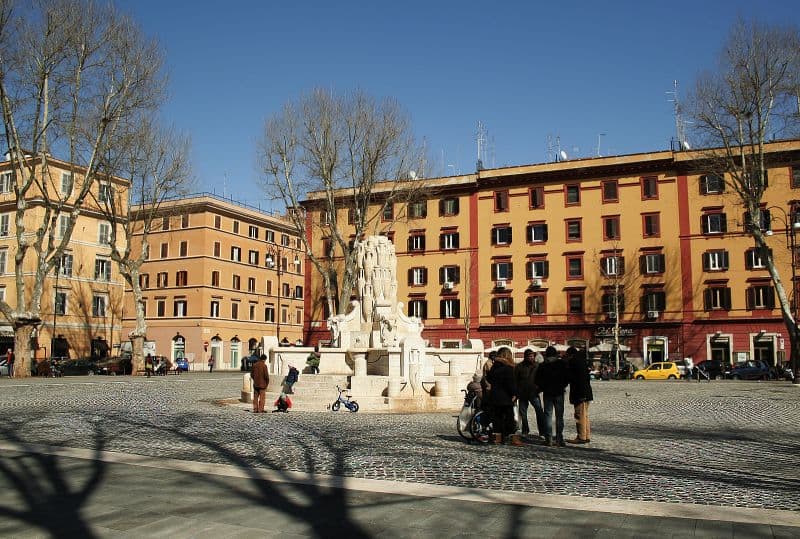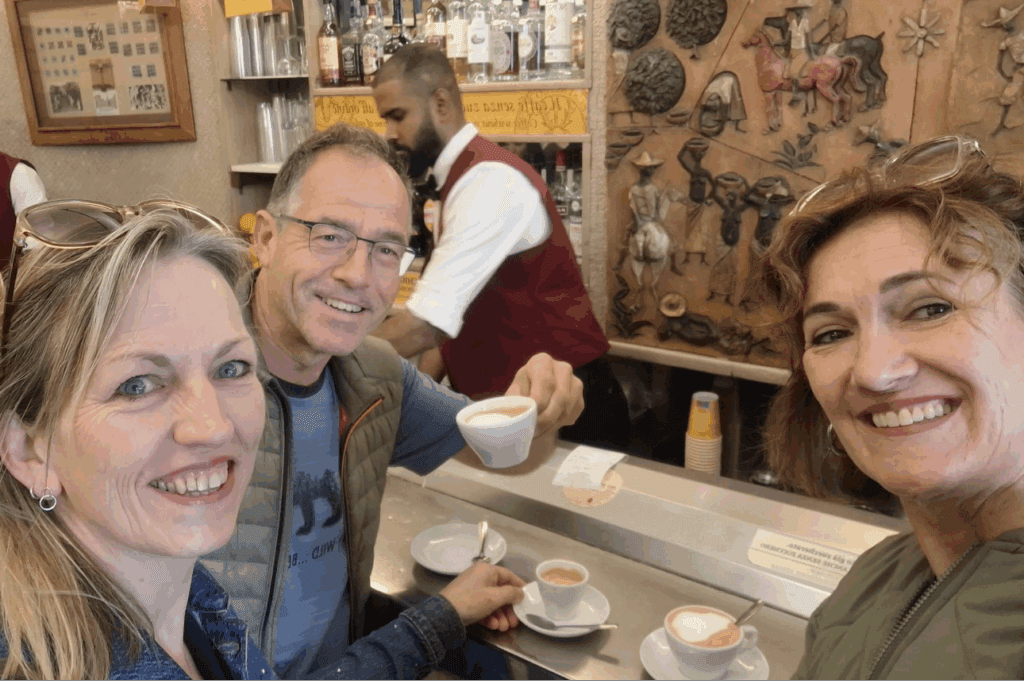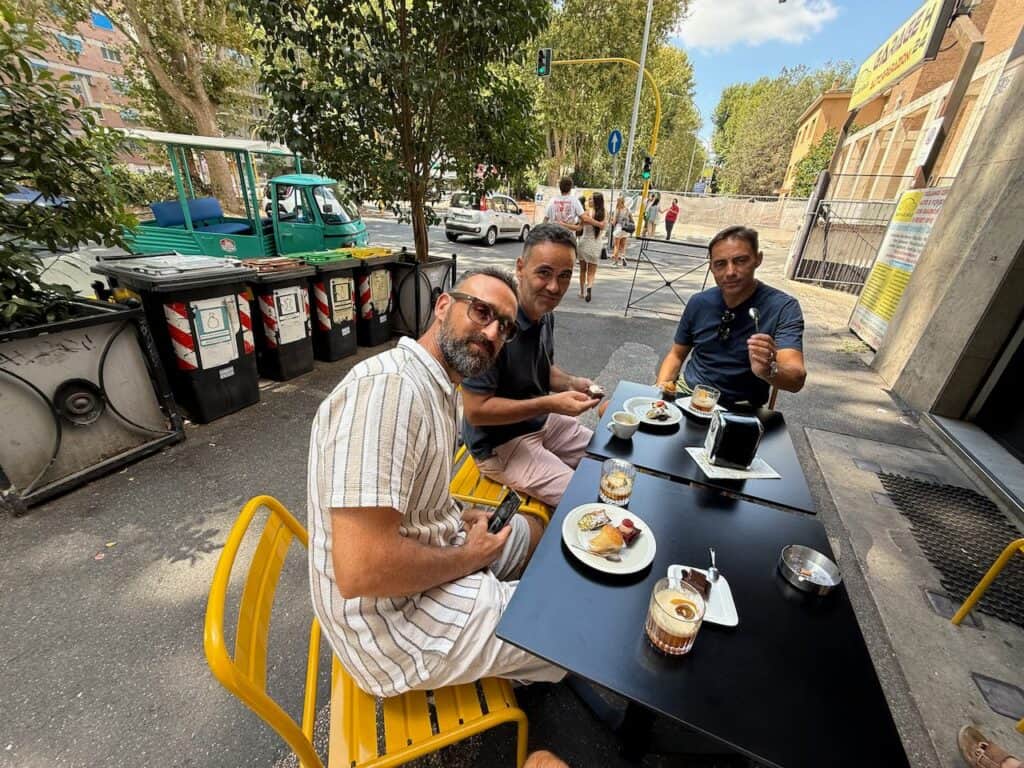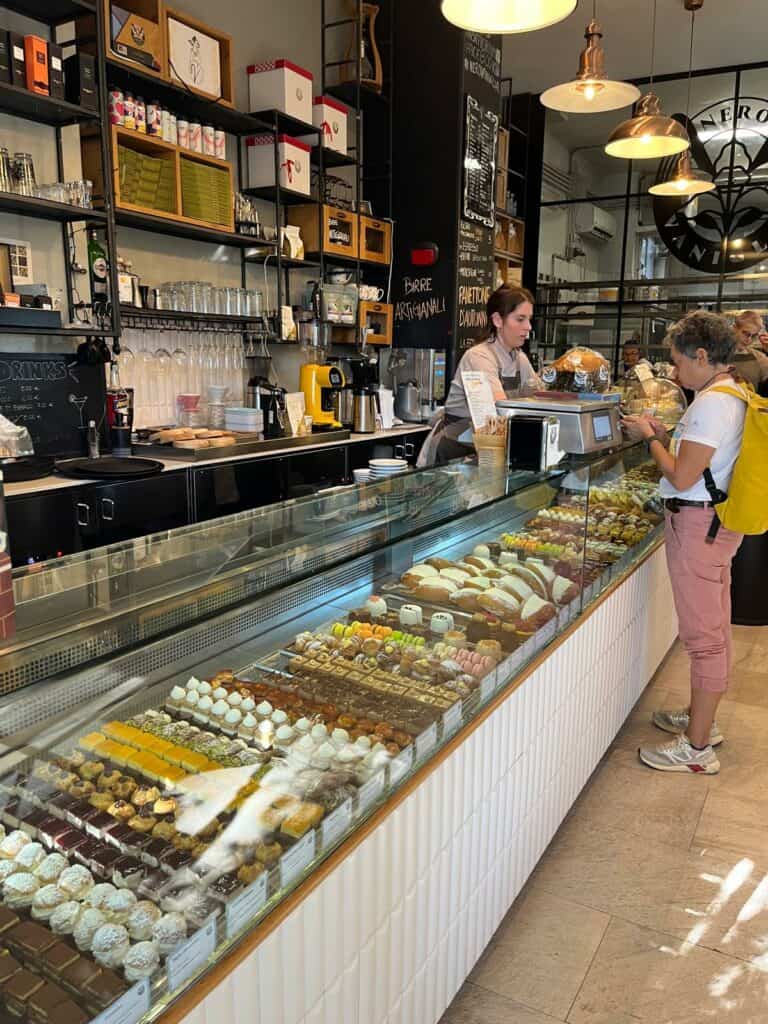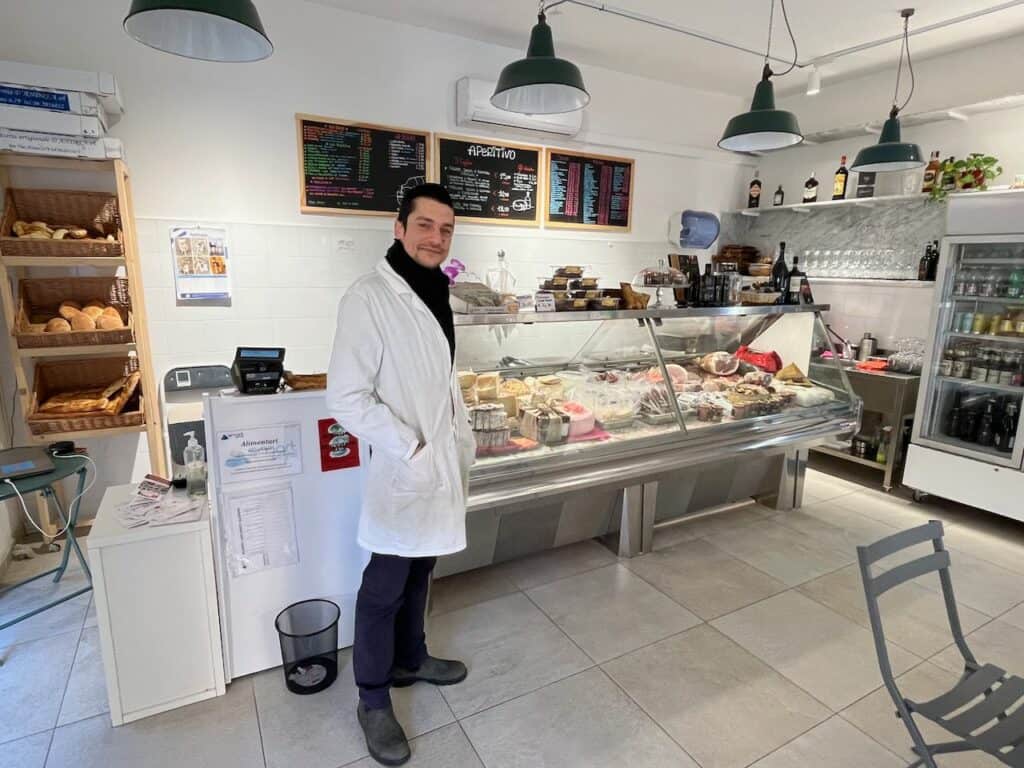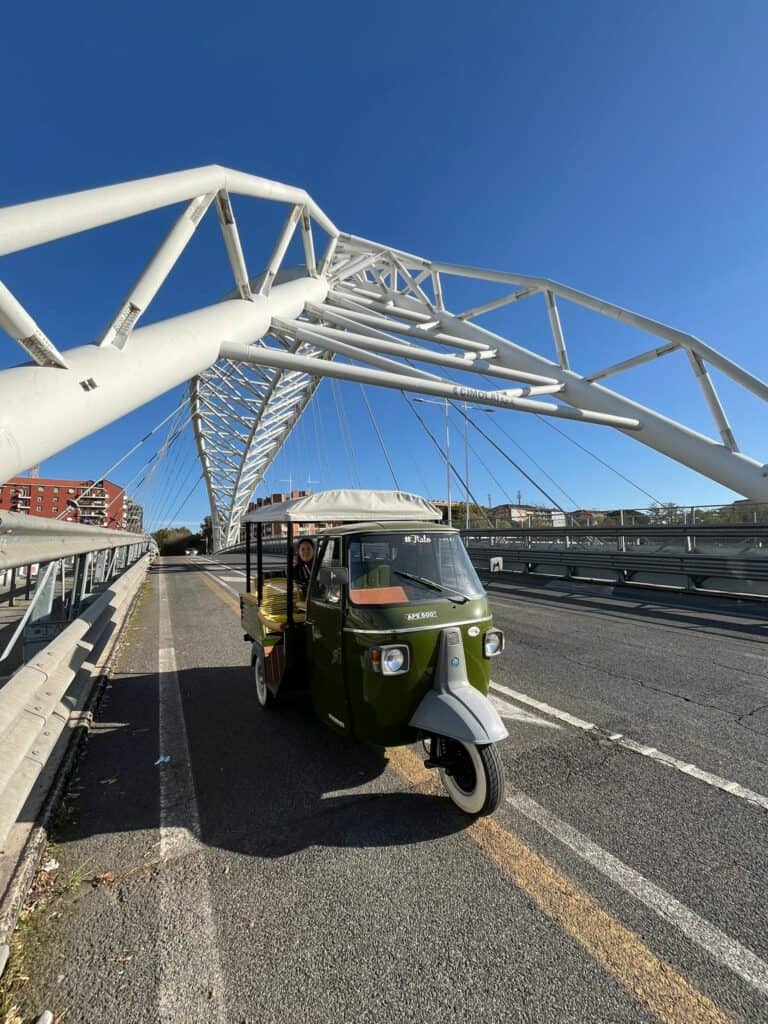Private Piaggio Tour of Rome – Appia Antica & food Experience
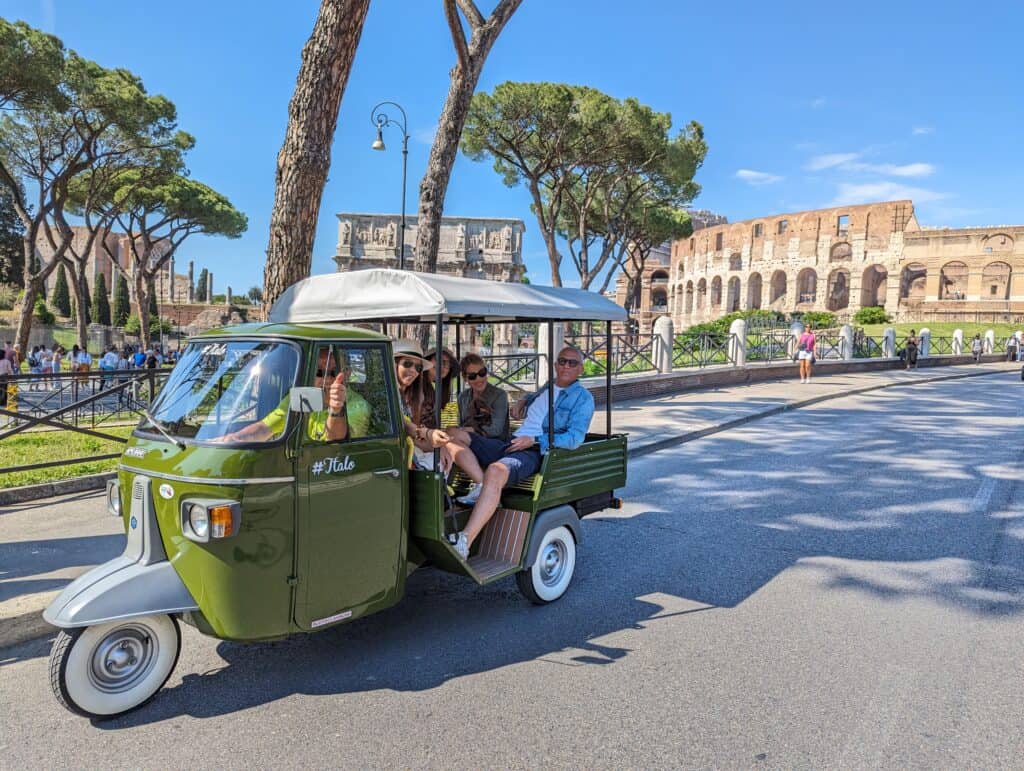
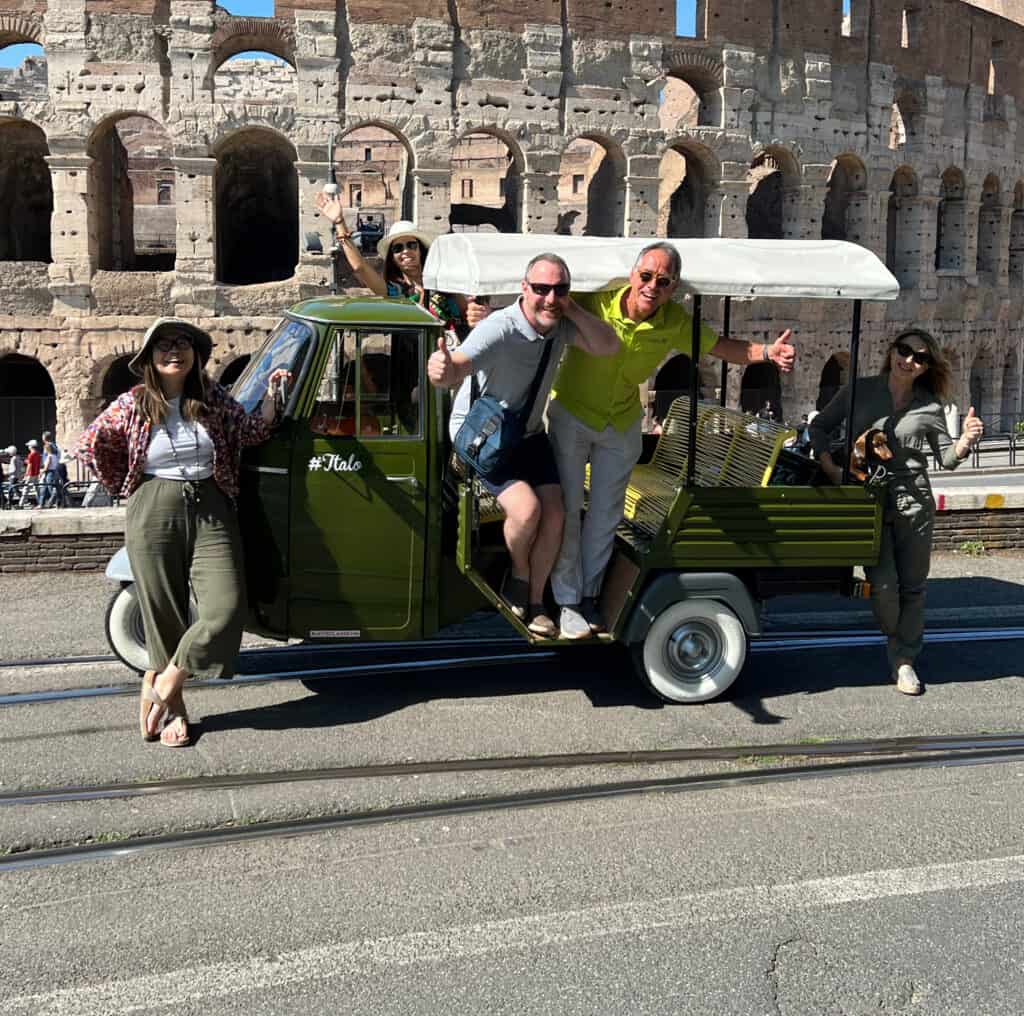
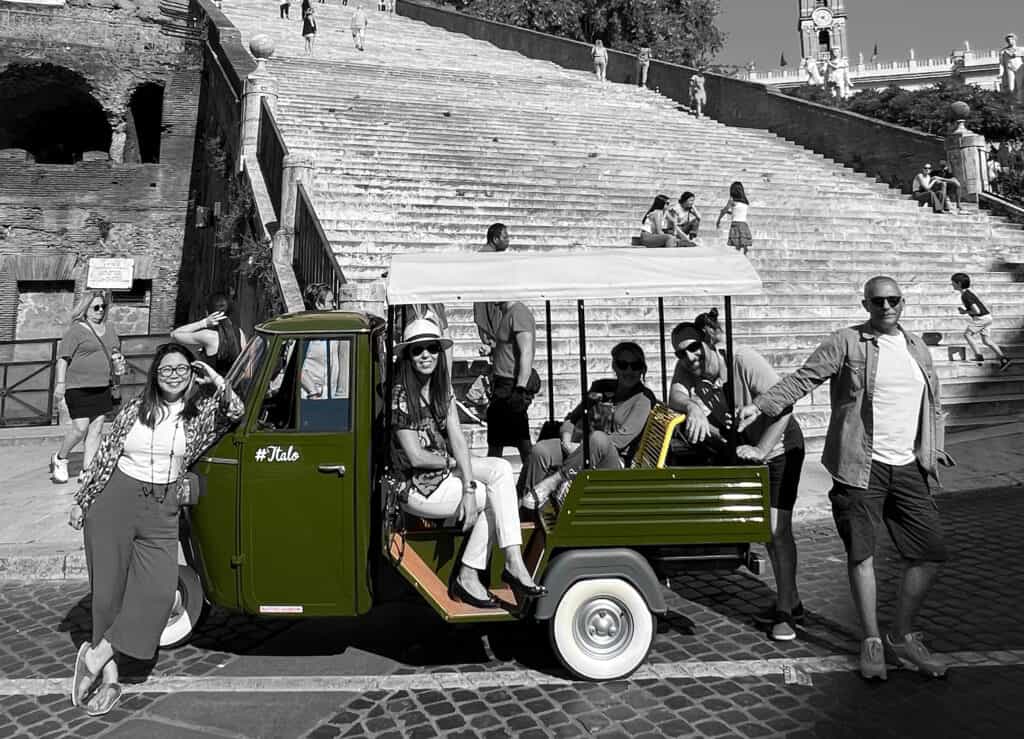
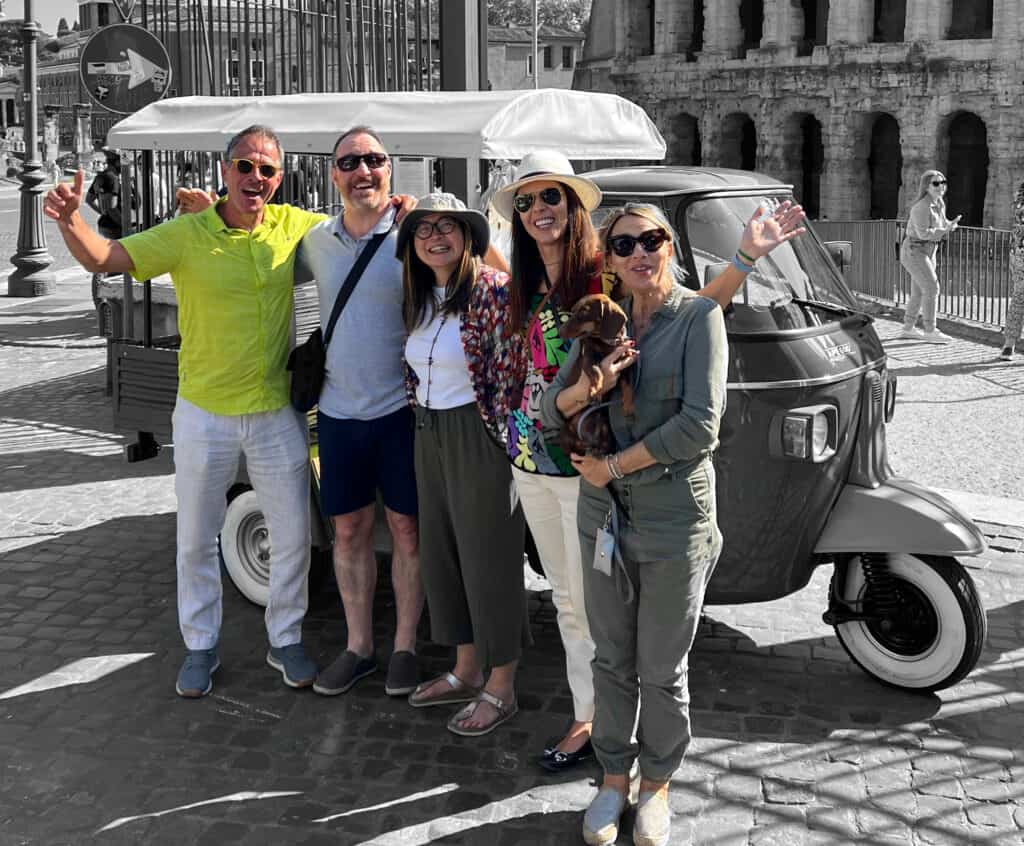

- Type: Private
- Duration: 3 H
- Max: 4 Seats
- English - Spanish
We begin this unique journey near the heart of Rome, next to the Pyramid of Caius Cestius, where you will meet your expert guide in the morning or early afternoon and board a vintage Piaggio 1972 Ape Calessino. Our tour will cover the Aurelian walls towards the Baths of Caracalla. Your professional guide will tell you his story. We will visit one of the oldest churches in Rome, the church of Santo Stefano Rotondo, stunning for its unique circular shape. During the tour, you will have the chance to see the curious church of Domine Quo Vadis, delve into the history of the miraculous encounter between Christ and St. Peter, discover the historical significance of Emperor Maxentius’ Circus and visit the Tomb of Metella. We will also enter the Basilica of San Sebastiano where we will visit the last masterpiece of the famous Bernini, the Salvator Mundi. We will stop in the oldest part of the Appian Way for a walk.
Highlights
- Ride in a vintage electric Piaggio Ape Calessino
- Explore the mysterious Santo Stefano Rotondo Church
- Discover the Tomb of Metella and Quintili’s Villa
- Led by an expert English-speaking local guide
- Enjoy 2 food stops
- Private tour experience
A True Taste of Rome
- Refund if cancelled at least 3 days before the event
- If you have questions about this tour or need help making your booking, we’d be happy to help.
Call us: +39 3347029902
Itinerary

Pyramid Caio Cestiio Epulo (18-12 BC)
Magistrate and the pyramid was built in 330 days according to his will.
Terme di Caracalla (bult 212-216 AC) Finished 235 AC
In operation until 530 AC. Built by Septimus Severus and Caracalla. His name comes from a Gallic cloak that he used to wear and that became fashion. 1600 people at the same time could be there on 25 Ha of land. With libraries, shops, gym, outdoor pools.
Santo Stefano Rotondo
Round shaped church dating back to the V century under Pope Leone 1. It is the first church in Rome with a circular plan. Corinthian colums. Most likely a Mithraeum from the II century and a military place of the Castra Peregrinorum (secret service).
Aurelian Walls (271 – 275 AC)
Built to protect Rome from the Barbarians. Built in 4 years by the people of Rome with 25.000 people defending the wall. The wall was heightned double in seize under Maxentius.
Porta Pia & Porta San Sebastiano
Two very important entrance gates to Rome, part of the Aurelian walls, built between 271 and 274 AC to protect Rome from the Barbarians.
Beginning of Appia Antica (312 AC)
The Appia Antica was build by Appio Claudio Cieco and started at Porta Capena. Built for military purpose to enlarge the Roman empire.
Chiesa Quo Vadis
Peter fled from crucifiction in Rome and met Jesus on the Appian road and asked him: Quo Vadis? Where are you going to? Jesus replied: I am going to Rome to be crucified again. Peter gains courage and goes back to Rome where he would be hung upside down where now the St. Peter square is.
Catacombe San Calisto
The Catacombs of San Callisto (Catacombe di San Callisto) are one of Rome’s most famous early Christian burial sites, located on the Appia Antica. Dating back to the 2nd century CE, they were used for Christian burials until the 5th century. The catacombs are named after Pope Callixtus I, who is believed to have been buried here.
Mausoleo di Cecilia Metella
An ancient Roman tomb dating back to the 1st century BCE. This impressive cylindrical structure was built to honor Cecilia Metella, a noblewoman from a powerful Roman family. The mausoleum stands at about 11 meters high and 29 meters in diameter, making it a striking landmark along the historic Via Appia, one of Rome’s oldest roads.
The Catacombs of Domitilla
An early Christian burial site located along Via delle Sette Chiese in Rome. Dating back to the 2nd century CE, these catacombs are among the largest and most well-preserved in Rome.
Garbatella District
What makes Garbatella so intriguing is its distinctive design. This was modeled on the garden city suburbs that were popular in England in the early 20thcentury, creating a particularly unique style of architecture and sense of community. But from its humble origins, Garbatella has grown into one of Rome’s culture centers, with art, architecture, gastronomy, and performances waiting to be uncovered.
Nero Vaniglia Food Stop
Nero Vaniglia is a charming food stop in Rome, known for its delicious offerings of traditional Italian pastries, artisan gelato, and specialty coffees. Located in the heart of the city, it’s a perfect place to indulge in a sweet treat or a quick refreshment while exploring the area.
Eataly: Biggest Italian Food market
One of the largest Italian food markets, offering an extensive selection of high-quality Italian products. Located in various cities worldwide, including a major one in Rome, it’s both a food marketplace and a dining experience.
Monte Testaccio
an ancient artificial mound in Rome, made entirely of broken pottery fragments, or amphorae, that date back to the Roman Empire. It was created as a result of the disposal of over 53 million discarded amphorae, which were used to transport goods like olive oil, wine, and grains.
Testaccio Food stop
A vibrant food destination in Rome, known for its authentic Roman cuisine and local markets. A must-visit food stop in the neighborhood is the Testaccio Market (Mercato di Testaccio), where you can find fresh produce, meats, cheeses, and artisanal goods. The market is also home to a variety of street food vendors offering traditional Roman dishes like supplì (fried rice balls), porchetta sandwiches, and fresh pasta.

